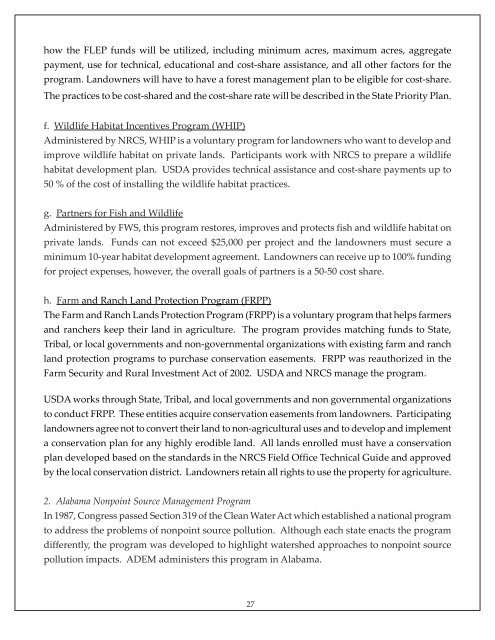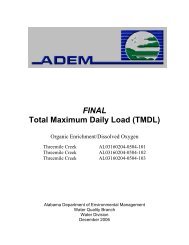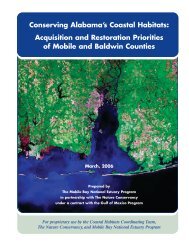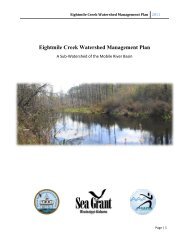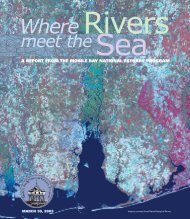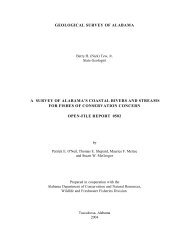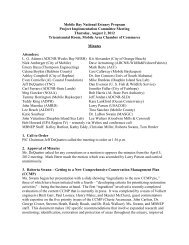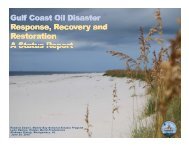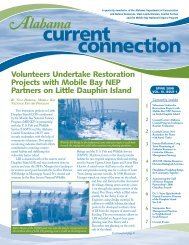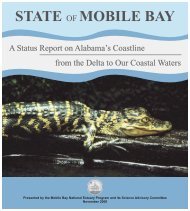Wolf Bay Plan Final - Mobile Bay National Estuary Program
Wolf Bay Plan Final - Mobile Bay National Estuary Program
Wolf Bay Plan Final - Mobile Bay National Estuary Program
- No tags were found...
Create successful ePaper yourself
Turn your PDF publications into a flip-book with our unique Google optimized e-Paper software.
how the FLEP funds will be utilized, including minimum acres, maximum acres, aggregatepayment, use for technical, educational and cost-share assistance, and all other factors for theprogram. Landowners will have to have a forest management plan to be eligible for cost-share.The practices to be cost-shared and the cost-share rate will be described in the State Priority <strong>Plan</strong>.f. Wildlife Habitat Incentives <strong>Program</strong> (WHIP)Administered by NRCS, WHIP is a voluntary program for landowners who want to develop andimprove wildlife habitat on private lands. Participants work with NRCS to prepare a wildlifehabitat development plan. USDA provides technical assistance and cost-share payments up to50 % of the cost of installing the wildlife habitat practices.g. Partners for Fish and WildlifeAdministered by FWS, this program restores, improves and protects fish and wildlife habitat onprivate lands. Funds can not exceed $25,000 per project and the landowners must secure aminimum 10-year habitat development agreement. Landowners can receive up to 100% fundingfor project expenses, however, the overall goals of partners is a 50-50 cost share.h. Farm and Ranch Land Protection <strong>Program</strong> (FRPP)The Farm and Ranch Lands Protection <strong>Program</strong> (FRPP) is a voluntary program that helps farmersand ranchers keep their land in agriculture. The program provides matching funds to State,Tribal, or local governments and non-governmental organizations with existing farm and ranchland protection programs to purchase conservation easements. FRPP was reauthorized in theFarm Security and Rural Investment Act of 2002. USDA and NRCS manage the program.USDA works through State, Tribal, and local governments and non governmental organizationsto conduct FRPP. These entities acquire conservation easements from landowners. Participatinglandowners agree not to convert their land to non-agricultural uses and to develop and implementa conservation plan for any highly erodible land. All lands enrolled must have a conservationplan developed based on the standards in the NRCS Field Office Technical Guide and approvedby the local conservation district. Landowners retain all rights to use the property for agriculture.2. Alabama Nonpoint Source Management <strong>Program</strong>In 1987, Congress passed Section 319 of the Clean Water Act which established a national programto address the problems of nonpoint source pollution. Although each state enacts the programdifferently, the program was developed to highlight watershed approaches to nonpoint sourcepollution impacts. ADEM administers this program in Alabama.27


